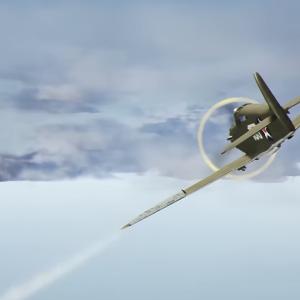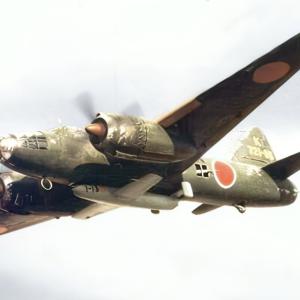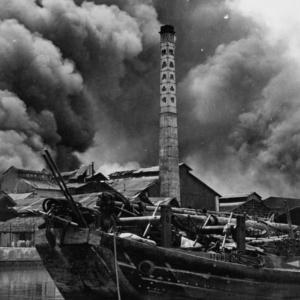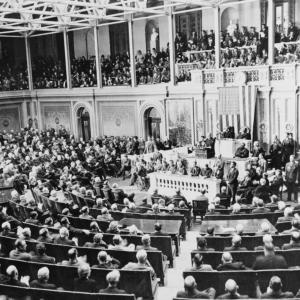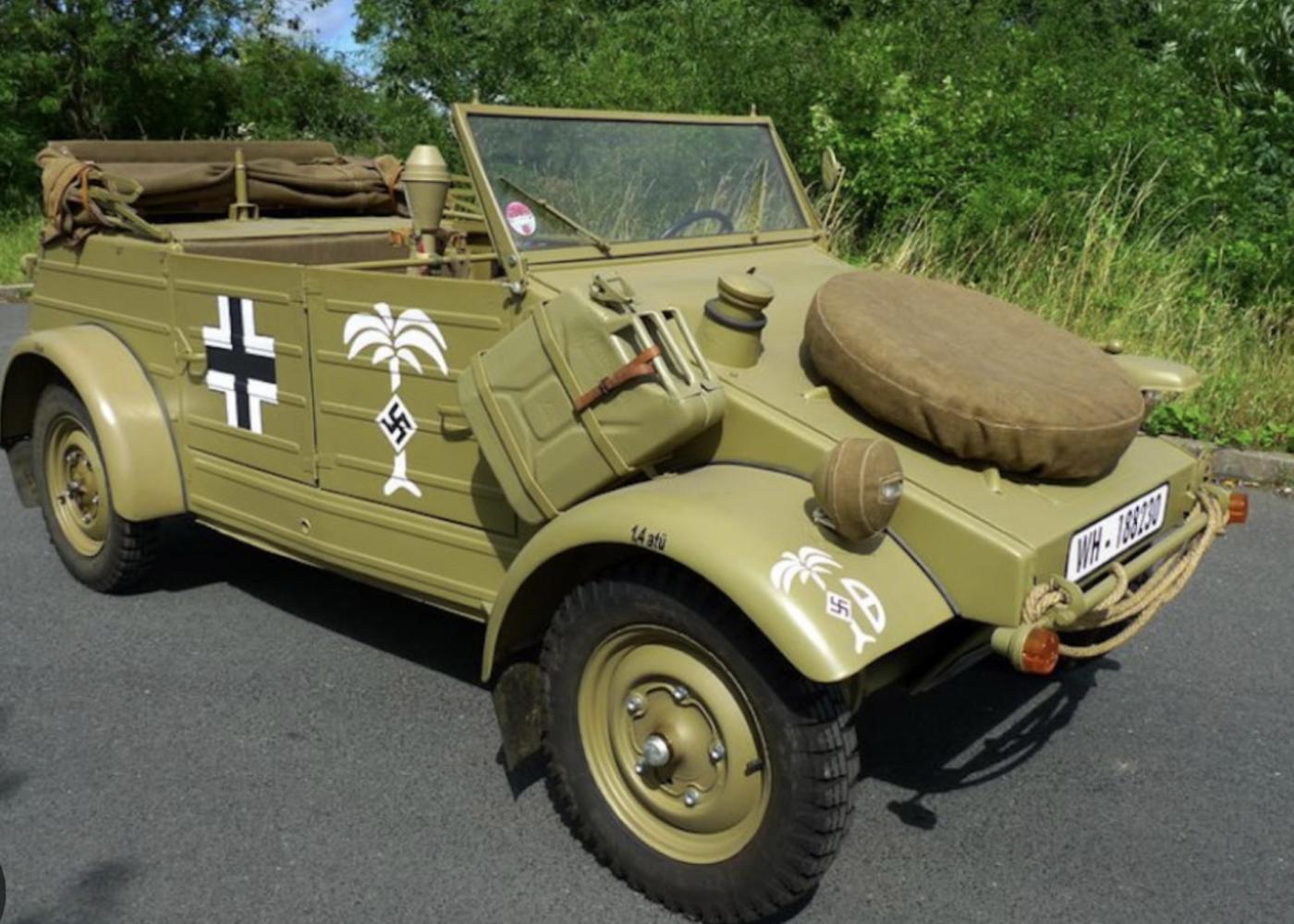
Kubelwagen
The Volkswagen Type 82 Kübelwagen, known simply as the Kübelwagen, was the primary light military utility car of the German armed forces during the Second World War. Its name was a shortened form of the German word Kübelsitzwagen, meaning “bucket-seat car,” a reference to the deep bucket-style seats fitted to keep occupants secure over rough ground. Designed by Ferdinand Porsche, the vehicle was based heavily on the chassis and mechanical layout of the civilian Volkswagen Beetle, adapting that platform to military use with remarkable success. It had a rear-mounted, air-cooled four-cylinder engine, rear-wheel drive, and simple flat bodywork pressed from sheet steel. This combination of simplicity, light weight, and clever engineering made it one of the most distinctive and practical vehicles of the war.
The origins of the Kübelwagen date back to 1938, when the German army sought a small, inexpensive, and easy-to-maintain transport vehicle for reconnaissance, personnel movement, and light cargo duties. The requirement stipulated that it must remain under 950 kilograms when fully loaded, be mechanically robust, and perform well on unpaved roads and open terrain. Porsche, already deeply involved with the Volkswagen project, was tasked with adapting the Beetle’s design for military purposes. To meet the weight restriction and still deliver off-road capability, Porsche focused on keeping the construction extremely light while maximising ground clearance and improving the suspension. The first prototypes, designated Type 62, were tested in late 1938 and early 1939. Although they were only rear-wheel drive, their performance in rough ground trials was impressive, largely due to their low weight and effective torque delivery from the small but dependable engine.
These prototypes saw further trials during the German invasion of Poland in 1939, which revealed areas for improvement. The army requested modifications to increase off-road ability, durability, and carrying capacity. Porsche responded by adding gear-reduction hubs to provide extra torque, fitting a self-locking differential for better traction, installing larger wheels, and strengthening the suspension. Ground clearance was increased, and the body design was adjusted for greater practicality in military service. The resulting production model, designated Type 82, went into full manufacture in February 1940 at the Volkswagen plant in Stadt des KdF-Wagens, later known as Wolfsburg. The bodywork was produced by Ambi Budd Presswerke in Berlin, and final assembly was handled at the main Volkswagen works.
Production continued throughout the war, with approximately 50,435 Kübelwagens built between 1940 and 1945. After Germany’s surrender, British occupation authorities briefly resumed production to supply their own forces, producing around 2,490 additional vehicles. The Kübelwagen was deployed to virtually every front where German troops operated, from the scorching heat of the North African deserts to the freezing conditions of the Eastern Front, as well as in Western Europe, the Balkans, and Scandinavia. Its rear-mounted air-cooled engine gave it an advantage in extreme climates, as it required no radiator and was less prone to overheating or freezing. The flat, smooth underbody allowed it to slide over soft terrain rather than digging in, and its low weight meant it could cross ground that often trapped heavier, more complex four-wheel-drive vehicles.
In service, the Kübelwagen proved highly versatile. Its primary roles included carrying personnel, transporting small amounts of supplies, serving as a reconnaissance platform, acting as a command car, and even functioning as a field ambulance when fitted with stretcher racks. The vehicle could also tow a variety of light loads, including single-axle cargo trailers, ammunition carts, small engineering wagons, and light artillery pieces such as the 3.7 cm Pak 36 anti-tank gun. In communications units, it often towed small generator or radio trailers to provide mobile signal support.
Although it was not intended to be a fighting vehicle, the Kübelwagen could be armed when circumstances demanded. Field modifications frequently saw a pintle mount installed in the passenger area or above the windscreen to carry a machine gun, most commonly the MG 34 or MG 42 general-purpose machine gun. In reconnaissance and security roles, these weapons provided valuable defensive capability, especially during convoy escort or patrol duties. Some vehicles were experimentally fitted with light anti-tank rifles such as the Panzerbüchse 39, but these were uncommon due to the limited effectiveness of such weapons as the war progressed. Despite its light armament, the Kübelwagen’s true value lay in its ability to move troops and equipment quickly and efficiently in almost any environment.
By the end of the war, the Kübelwagen had earned a reputation among both German and Allied soldiers for its reliability, mechanical simplicity, and surprising off-road performance. Captured examples were studied by the Allies, and American reports noted that, in certain conditions, the Kübelwagen could equal or even exceed the mobility of the Willys Jeep, despite lacking four-wheel drive. This was largely due to its clever use of gearing, lightweight construction, and minimal mechanical complexity. Easy to repair in the field and cheap to produce, it embodied the German approach to efficient, purpose-built military engineering.
The Volkswagen Type 82 Kübelwagen remains one of the most recognisable vehicles of the Second World War, a symbol of German mobility and ingenuity. Its success demonstrated that careful design and weight management could offset the absence of more complex drive systems, and it stood as a counterpart to the Allied Jeep in both function and reputation. Capable of towing light artillery, carrying vital supplies, transporting troops into the heart of battle, and even mounting weapons when needed, the Kübelwagen was a true workhorse of the Wehrmacht from the beginning of the conflict until its end.

